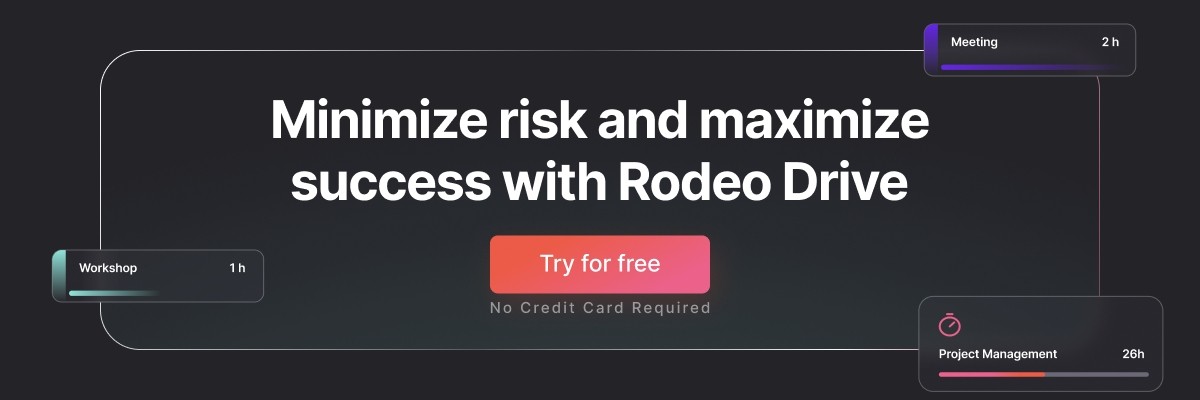What Are Project Assumptions? How Do They Relate to Success?
If you’re a seasoned project manager, you’ll know the real ‘art’ of the work isn’t just in mapping out tasks and timelines. To get a project safely to its destination, you’ll need to discern and manage the unspoken assumptions that underpin decisions. Recognizing project assumptions, as a matter of course, will improve your ability to steer projects successfully.
This article cuts into project assumptions, offering insights and strategies that might be missing in your project management toolkit.
What are project assumptions?
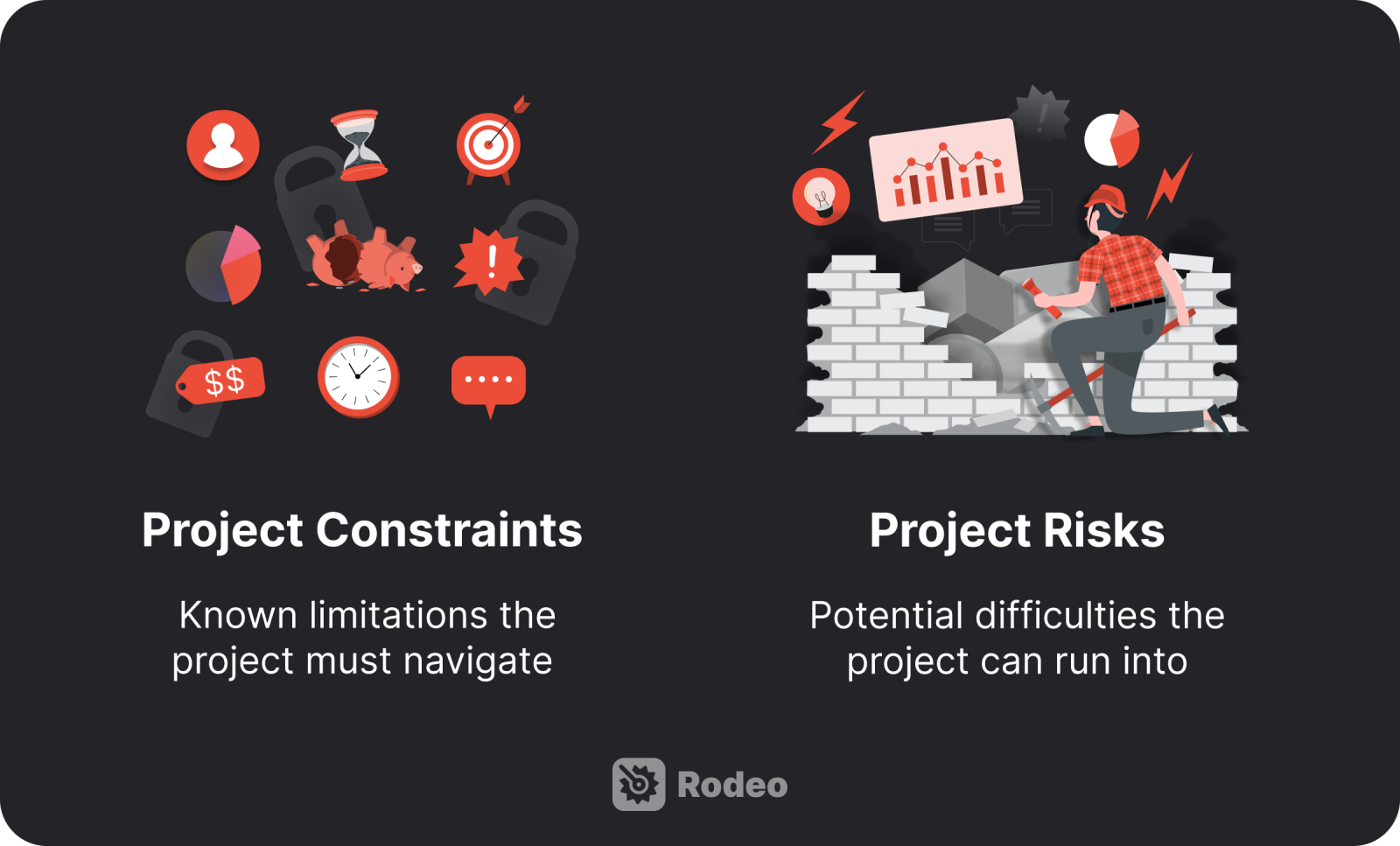
In project management, assumptions are everywhere. That’s an unavoidable part of any practice that deals with the future. Assumptions are the “givens” we take for granted — conditions and outcomes we believe to be true without immediate proof. These assumptions are part of our project planning and execution. They’re included in everything from timelines to budget.
But there’s a catch: if these assumptions are flawed, the project can run into pitfalls and veer off course. That’s why outlining assumptions, constraints, and risk is important.
Project assumptions vs. project constraints
Project assumptions and project constraints are closely related. While assumptions are what we believe to be true about the project progression, constraints are the known limitations the project must navigate. For example, believing materials will be delivered on schedule is an assumption, while knowing the project is due on a fixed deadline is a constraint.
Having the correct assumption (in this case the materials are delivered on time) allows the project to operate properly within its constraints (being completed by the deadline). Recognizing how assumptions and constraints interact helps us anticipate challenges and plan effectively.
Project assumptions vs. project risks
Similarly, there’s a relationship between project assumptions and project risks. In project plans, assumptions are treated as truths until proven otherwise. Risks are potential hurdles with uncertain outcomes. While we don’t necessarily assume they’ll happen, we try to anticipate them and take measures to mitigate them.
Some assumptions carry more risk than others. Project teams should carefully identify uncertain assumptions, since if they end up being wrong, they can derail a project. Using a risk register is a good way to fully evaluate the severity of your potential risks.
Using our previous example, if your team is relying on a supplier that has previously been unreliable, then it’s risky to assume they’ll deliver the materials on time, allowing the project to be finished by the deadline. If meeting the deadline is non-negotiable, then having a contingency plan like a secondary supplier would be a good mitigation strategy.
Why are project assumptions necessary?
That leads to the tricky part about assumptions — they’re a double-edged sword. While they’re necessary for forward movement, they also carry inherent risks. For the most part, they operate like educated guesses. Necessary for making decisions, but not infallible truths.
Managing projects well requires making assumptions, while also recognizing their speculative nature and preparing accordingly. Assumptions are important as:
- A foundation for planning: Every project begins with a vision — a desired end state. Assumptions bridge the gap between vision and reality, allowing project managers to plan even when not all variables are known. They simplify the complex, providing a base from which to develop realistic project strategies.
- Risk management: Identifying assumptions early in the planning process is a proactive form of risk management. It enables teams to highlight areas of uncertainty and develop contingency plans.
Consider the scenario where your project’s success hinges on the availability of several key resources. It’s hard to avoid assuming these resources, whether they be skilled personnel, technology, or budgets, will be at your disposal when needed. The reality however is that people can suddenly become unavailable, deadlines can shift suddenly, and budgets can shrink.
Understanding these risk scenarios from the get-go allows you to build resilience into your projects. And while this can’t always prevent you from running into problems out of your control, it can help some projects survive otherwise serious barriers.
How to identify your project assumptions in 5 steps
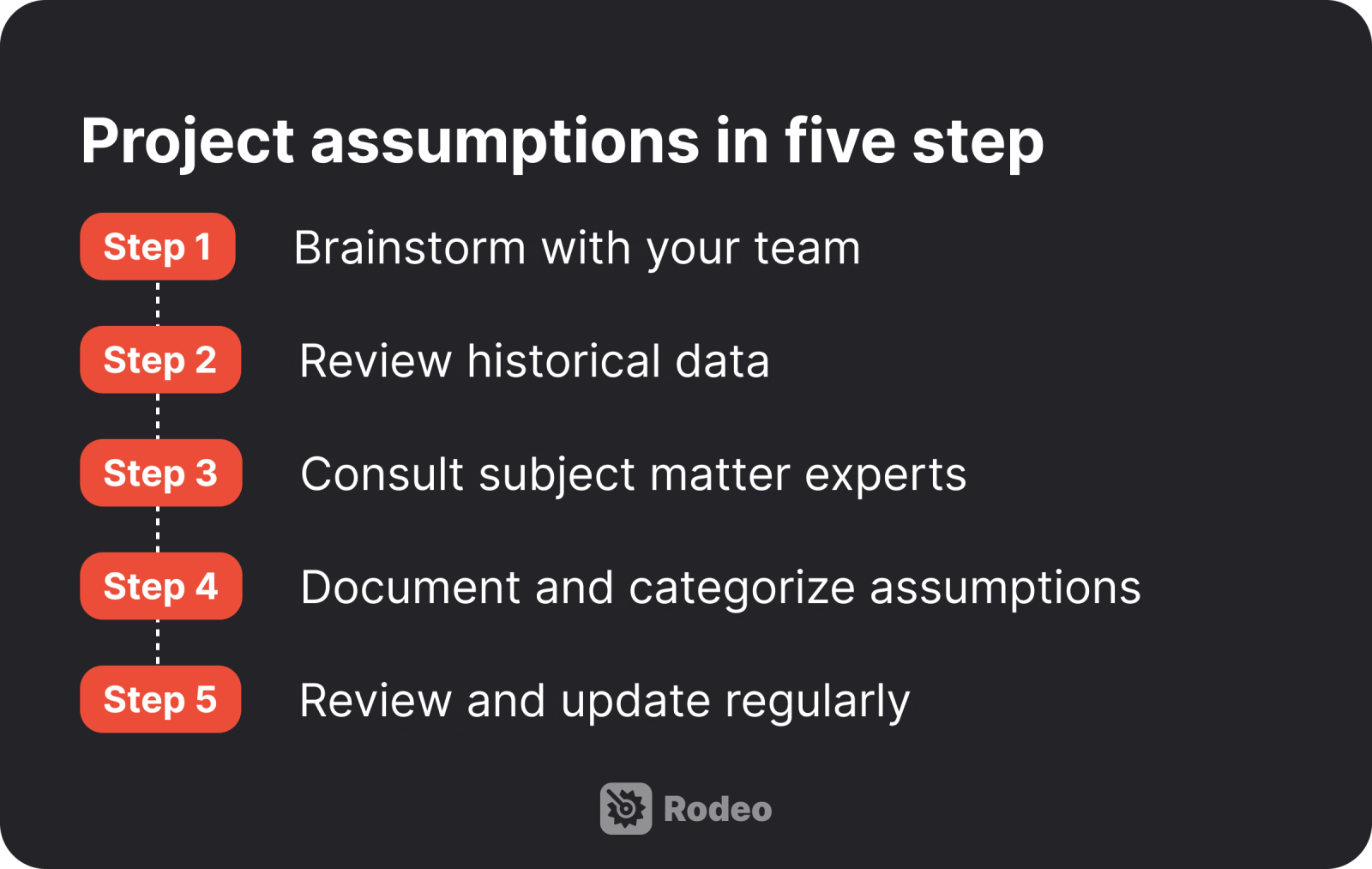
In essence, handling assumptions is important for project managers to prepare for the unpredictable and steer projects through inevitable rough patches with agility and foresight.
So let’s get into the heart of the issue: figuring out what you’re assuming. That way, you can ensure those project assumptions will help, not hinder, your intended course of action. Here are five steps you can take to make this a doable process.
Step 1: Brainstorm with your team
The first step in identifying your project assumptions is to bring together your project team to brainstorm. Document the core assumptions of the project and stakeholder expectations.
This collective effort develops a broad perspective, capturing as many aspects of the project as possible.
Step 2: Review historical data
Next, look back at similar projects your organization has undertaken. What project assumptions were made? Were they accurate? Refer to past progress reports to find obstacles and identify what project assumptions caused them. Analyzing past successes and failures provides invaluable insights, helping you spot patterns and avoid repeating mistakes.
Also read: What is Project Progress Reporting?
Step 3: Consult subject matter experts
No one knows everything, which is why tapping into the knowledge of subject matter experts is crucial. Their depth of knowledge can reveal assumptions you might not have considered with just a high-level understanding. This can be the difference between an oversight and an achievable plan.
Related: Which Project Management Team Roles Are Key for Success?
Step 4: Document and categorize assumptions
Once identified, document each assumption. Categorizing them by project areas such as scope, budget, and timeline helps manage and track them efficiently. This documentation becomes a reference point, guiding decision-making throughout the project.
Step 5: Review and update regularly
Assumptions aren't set in stone. They should be reviewed and updated regularly as the project unfolds. New information might emerge, conditions may change, and assumptions once deemed safe may become risks. Staying agile and responsive to these shifts is key to keeping your project on track.
Best practices for handling project assumptions
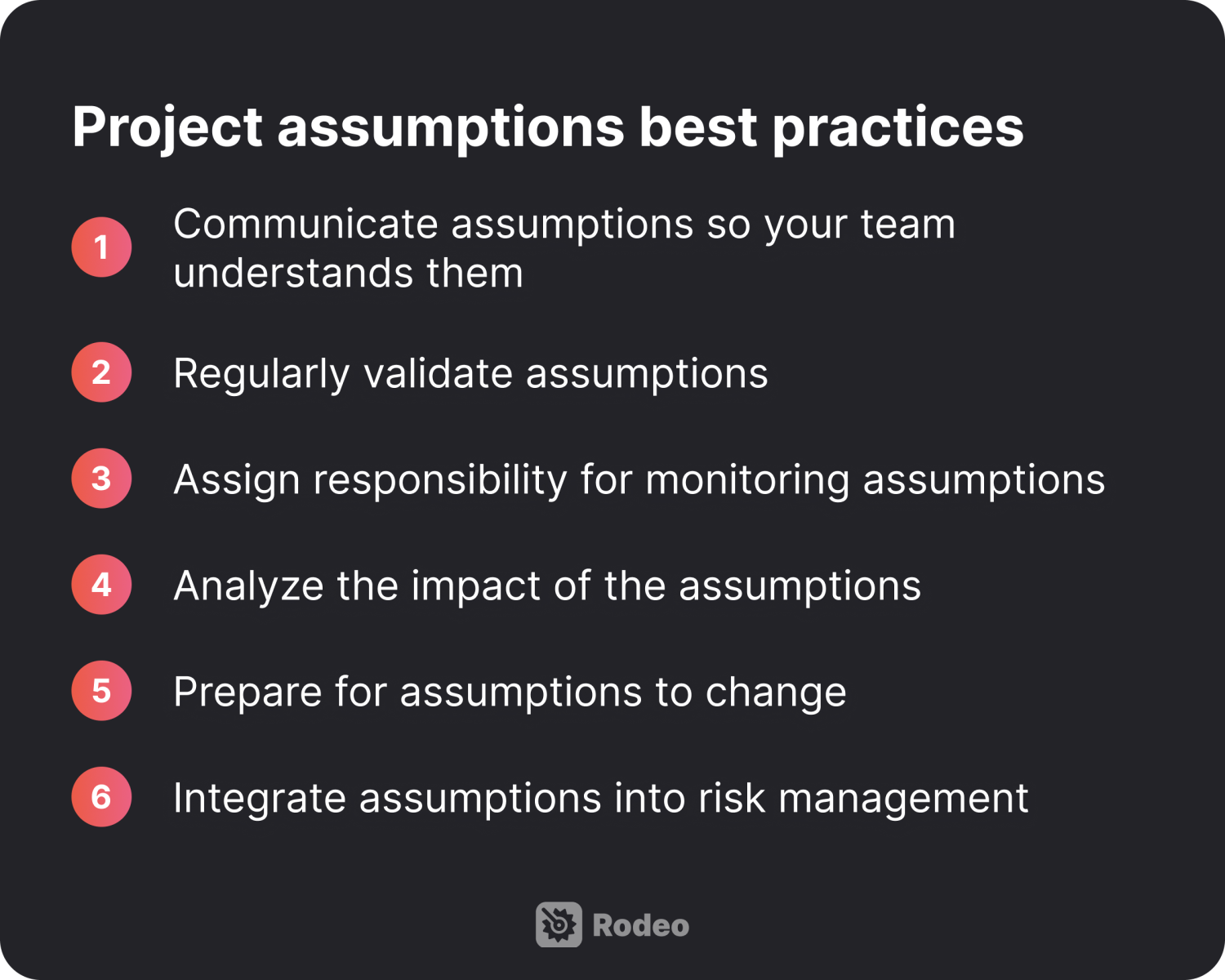
Following the steps above, you will have identified and documented all of your assumptions, which is a great starting point. But, the next question is how do you turn what you know about your assumptions into action — importantly action that will make your projects more resilient.
To answer this important question, here are some best practices for working with known project assumptions and using them for tangible improvements to your project management:
Communicate assumptions so your team understands them
With each of your assumptions documented in detail, making them accessible to your team and ensuring everyone understands them is important for monitoring them once the project is underway.
Team members executing the project are the first who can report if an assumption isn’t working out. Involving them at the outset not only promotes transparency but also facilitates easier tracking and validation of assumptions over time.
Action step: Create a dedicated section in your project documentation for assumptions. Use a template that includes fields for the assumption description, reason, and implications. Make sure this document is accessible to all team members and stakeholders for review and updates.
Regularly validate assumptions
Assumptions should not be set in stone. As a project progresses, new information may come to light, demanding a reassessment of initial assumptions. Schedule regular reviews of your assumptions log to verify their accuracy and relevance, adjusting your project plan as needed to reflect any changes.
Action step: Schedule monthly or quarterly reviews of your assumptions log as part of your project meetings. Use these sessions to discuss each assumption's current validity and update the log to reflect any changes based on the latest project data or external factors.
Assign responsibility for monitoring assumptions
For each assumption, assign a team member the responsibility of monitoring and validating it throughout the project's lifecycle. This ensures that assumptions are actively managed and that any necessary adjustments are promptly identified and addressed.
Action step: For each documented assumption, assign a specific team member as the owner. This person is responsible for tracking the assumption and providing regular updates on its status. Include a column in your assumptions log for the owner's name and contact information.
Analyze the impact of the assumptions
Understanding the potential impact of each assumption on your project is crucial. Conduct an impact analysis to identify how assumptions may affect project scope, timeline, budget, and quality. This analysis helps prioritize monitoring efforts and prepare contingency plans for assumptions that carry significant risk.
Action step: Implement a risk impact scale for assumptions, categorizing them as high, medium, or low impact. Use criteria such as potential delays, cost overruns, or quality issues to assess each assumption's impact. Focus monitoring and mitigation efforts on high-impact assumptions.
Prepare for assumptions to change
Be prepared for some assumptions to be proven wrong. Anticipate change management for critical assumptions, especially those with the potential to significantly disrupt the project. This proactive approach enables you to quickly adapt to changes, minimizing disruption to your project.
Action step: Develop contingency plans for your project's most critical assumptions. Outline alternative strategies and actions in your project plan that can be activated if an assumption is invalidated. Review these plans during your regular assumption reviews.
Integrate assumptions into risk management
Incorporate assumption validation into your project's risk management process. Identify which assumptions pose the highest risk to your project and develop strategies to mitigate these risks. This integration ensures that assumption management is a proactive part of safeguarding your project's success.
Action step: Link your assumptions log to your project's risk register. For each high-impact assumption, identify corresponding risks and include them in your risk management plan. This should include strategies for monitoring these risks and response plans if they materialize.
Also Read: Use This Free Risk Register Template to Keep Your Projects on Track
Tracking assumptions using a project assumptions log
An assumptions log is a document for tracking and managing your project’s assumptions. A well-maintained log details each assumption, its impact on the project, who will validate that assumption, and its current status.
Regularly updating this log ensures that assumptions aren’t forgotten, but rather actively monitored and reassessed, allowing for timely adjustments to project plans. Here’s a deeper explanation of the purpose of each element in an assumption log.
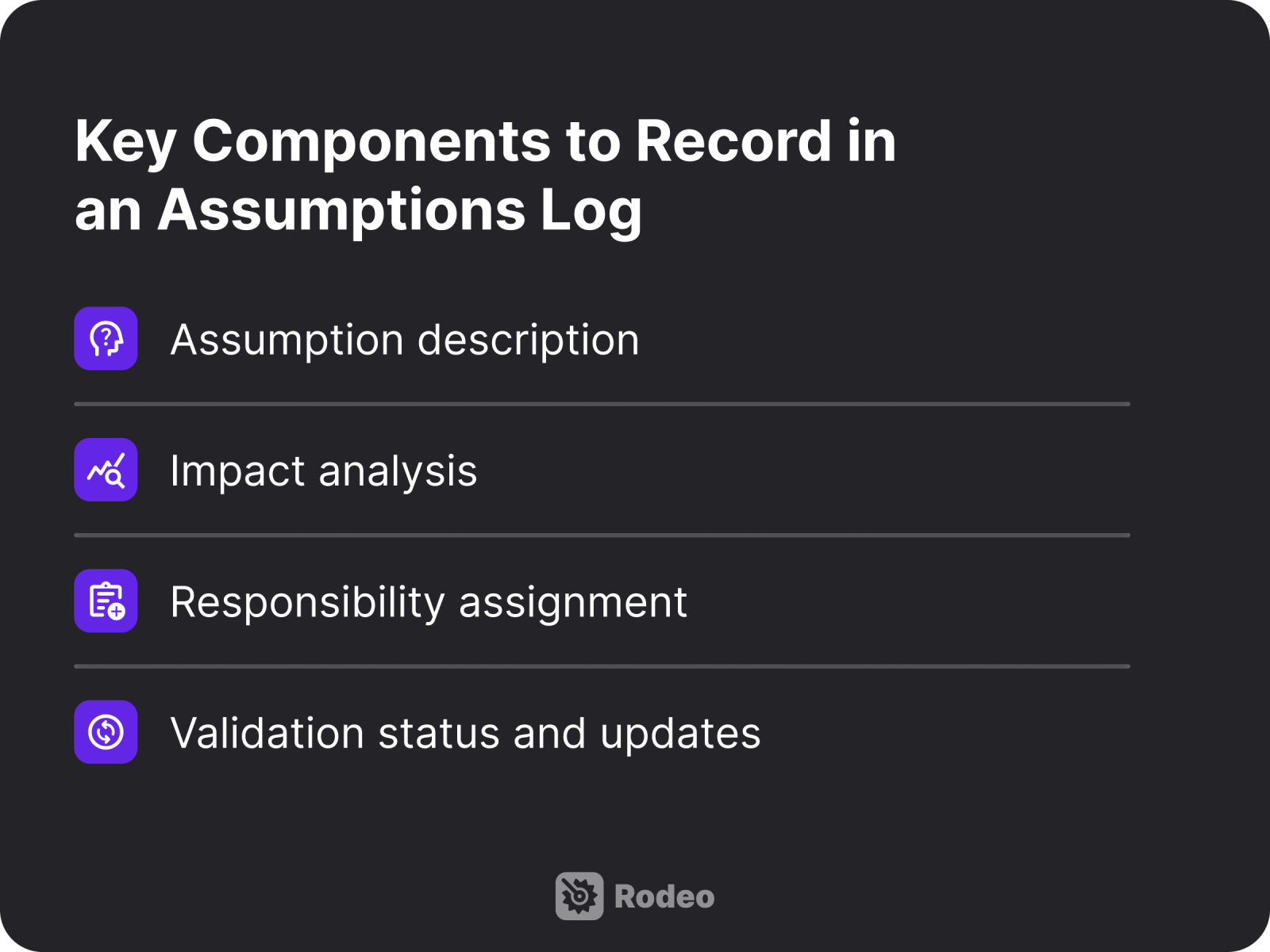
Assumption description
The starting point for an assumption log is a concise description of each assumption.
This description should provide enough detail to understand the assumption's context and its implications for the project. This can be about resource availability, technical requirements, support from project sponsors, compliance, or regulatory approvals.
The goal is to make each assumption easily understandable to anyone who reads the log, ensuring that the project team and stakeholders are on the same page.
Impact analysis
Analyzing the impact of each assumption is the next step. The analysis should explore how each assumption influences the project’s scope, timeline, resources, and overall success.
Understanding the potential impact of each assumption helps prioritize monitoring efforts and prepares the team for possible adjustments. “What happens if this assumption is incorrect?” is an important question to consider when conducting this analysis.
Responsibility assignment
Assigning responsibility for each assumption maintains accountability. For each assumption, designate a team member with domain knowledge to monitor, ensuring it remains valid throughout the project lifecycle.
The person tasked with observing the assumption should update the log with any changes or new information. This stops anything from falling through the cracks, maintaining the integrity and direction of the project.
Validation status and updates
The assumption log should include a section for tracking the validation status of each assumption. This includes initial validation efforts, ongoing monitoring, and any updates based on new information or changes in project conditions.
Regularly updating the log with the current status of each assumption — whether it remains valid, has been proven incorrect, or requires further investigation — keeps the project team informed and agile.
Some real-world examples of project assumptions
Project management advice is hard to generalize because while on paper we might all be “project managers,” what that looks like changes radically depending on the industry. So, looking at some practical examples, based on different real-world project settings, should provide better context on how assumptions operate and the implications they have for project planning.
IT project assumption
Example: You're deploying a new software system designed to enhance efficiency. The underlying assumption is that the current IT infrastructure is robust enough to support this new software without the need for significant upgrades.
Practical consideration: This assumption should prompt a preliminary infrastructure assessment to identify any potential gaps between current capabilities and the new software's requirements. Failure to validate this assumption could lead to unexpected delays and costs associated with upgrading hardware or expanding network capacity.
Construction project assumption
Example: A commercial building project operates under the assumption that all necessary construction permits will be granted without delay, allowing the project to adhere to its planned schedule.
Practical consideration: This assumption necessitates early engagement with local permitting offices, understanding the typical turnaround times, and any potential bottlenecks in the permit approval process. It might also involve preparing contingency plans, such as adjusting project timelines or beginning work on permit-independent phases first.
Healthcare project assumptions
Example: In a healthcare project, such as a clinical trial, the assumption might be that patient enrollment will meet predefined targets within the projected timeframe, ensuring that the trial proceeds as planned.
Practical consideration: To mitigate the risk associated with this assumption, project managers should implement robust recruitment strategies, including outreach programs, collaboration with patient advocacy groups, and contingency plans for low enrollment rates. Monitoring enrollment progress closely allows for timely adjustments to recruitment tactics.
Properly monitor your project assumptions with a project management solution
Leading a project from ideation to successful completion is a big undertaking. There are lots of milestones to hit and many moving parts to organize. Fortunately, software can make all this a lot less manual.
Rodeo Drive is a finance-first project management solution built to help project-based teams their reach big goals — all while staying on time and within budget. It offers budgeting, activity planning, live time-tracking of billable hours, reporting, and invoicing unified in one platform.
You can use Rodeo Drive to plan your projects and track whether they’re hitting milestones and meeting financial goals. Here are the standout features that thousands of creatives leverage to complete successful projects using the tool:
Budgets that update in real-time as billable hours are tracked
When you stay on budget you achieve better margins, and that means you get to keep more profit. That makes managing project budgets important.
That’s why projects in Rodeo Drive always start from your budget. You build your budget according to the phases of your project, organizing time-related expenses and purchase expenses for each phase.
Then, you can add markups to enhance profitability and generate purchase orders if you’re working with suppliers.
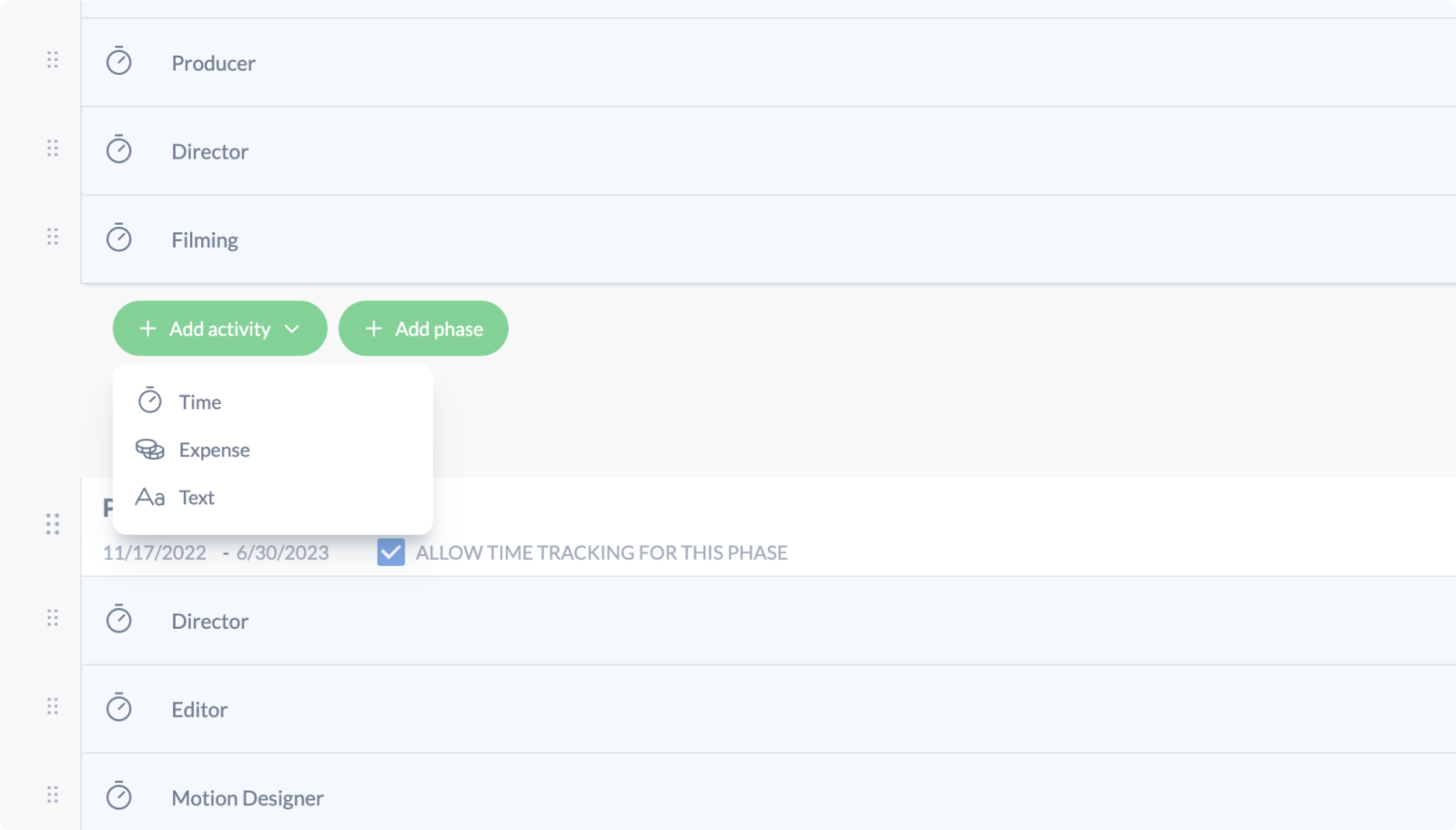
Add time and expense activities to your budget phases
From there, the budget is connected with everything else built into the platform. You can also generate and send custom estimates to your clients, complete with personalized branding and terms and conditions.
Plus, when it comes time to send an invoice, Rodeo Drive integrates with QuickBooks to make your billing processes a breeze.
Plan your project activities with ease
Loose plans and incorrect assumptions can impact your schedule and delay project delivery. Rodeo Drive keeps planning easy, flexible, and organized with the timeline-view planner.
Assign work based on individual workloads across all ongoing projects, and adjust plans with an intuitive drag-and-drop interface.

Build timelines and oversee projects from a granular or high-level view
Reporting insights to track your assumptions
Comprehensive data is the best tool for validating project assumptions. In Rodeo Drive, you can access reports that provide live insights on productivity, the amount of time and budget individual activities consume, and your margins.
This provides a 360-view into the financial health of your projects, along with early signals so you can course correct if your project isn’t going as planned. Rodeo Drive’s reporting suite provides insights into your financial performance, team productivity, and time registration.
.png)
The Time report provides an overview on how your team is spending their time
See the results for yourself. Adopt the modern project management solution designed for creative, project-based teams. Use Rodeo Drive for free today — no credit card, or strings attached.






